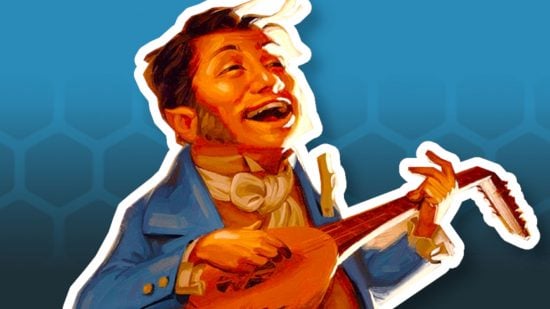The DnD Bard 5e class is fueled by charisma, using the power of performance to cast spells, charm others, and inspire their party. This guide includes the complete rules for playing a Dungeons and Dragons Bard, and we can recommend our favorite spells, stats, and character builds to help you begin your Bardic adventure.
If you need more support when building your Bard, our DnD character creator guide can walk you through the process. We can also explain the other DnD classes, in case you’re not quite committed to becoming a Bard. Otherwise, here are our tried-and-tested tips for choosing your Bard’s build, spells, and DnD race.
Here’s everything you need to know about the DnD Bard 5e class:
- Bard 5e class features
- Spellcasting
- Bardic Inspiration 5e
- Jack of All Trades 5e
- Song of Rest 5e
- Expertise
- Ability Score Increase
- Font of Inspiration 5e
- Countercharm 5e
- Magical Secrets 5e
- Superior Inspiration
- Bard Colleges 5e
And here’s how to build an excellent DnD Bard:

Bard 5e class features
Hit points
| Hit dice | 1d8 per Bard level |
| Hit points at level one | 8 + Constitution modifier |
| Hit points at higher levels | 1d8 (or 5) + Constitution modifier per Bard level after first |
Proficiencies
| Armor | Light armor |
| Weapons | Simple weapons, hand crossbows, longswords, rapiers, shortswords |
| Tools | Three musical instruments of your choice |
| Saving throws | Dexterity, Charisma |
| Skills | Choose any three |
Equipment
You start with the following equipment, plus any equipment granted by your DnD background:
- (a) a rapier, (b) a longsword, or (c) any simple weapon
- (a) a diplomat’s pack or (b) an entertainer’s pack
- (a) a lute or (b) any other musical instrument
- Leather DnD armor and a dagger
Class features
Here’s the new features you’ll gain with each DnD level up:
| Level | Proficiency bonus | Features |
| 1 | +2 | Spellcasting, Bardic Inspiration (d6) |
| 2 | +2 | Jack of All Trades, Song of Rest (d6) |
| 3 | +2 | Bard College, Expertise |
| 4 | +2 | Ability Score Improvement |
| 5 | +3 | Bardic Inspiration (d8), Font of Inspiration |
| 6 | +3 | Countercharm, Bard College feature |
| 7 | +3 | – |
| 8 | +3 | Ability Score Improvement |
| 9 | +4 | Song of Rest (d8) |
| 10 | +4 | Bardic Inspiration (d10), Expertise, Magical Secrets |
| 11 | +4 | – |
| 12 | +4 | Ability Score Improvement |
| 13 | +5 | Song of Rest (d10) |
| 14 | +5 | Magical Secrets, Bard College feature |
| 15 | +5 | Bardic Inspiration (d12) |
| 16 | +5 | Ability Score Improvement |
| 17 | +6 | Song of Rest (d12) |
| 18 | +6 | Magical Secrets |
| 19 | +6 | Ability Score Improvement |
| 20 | +6 | Superior Inspiration |
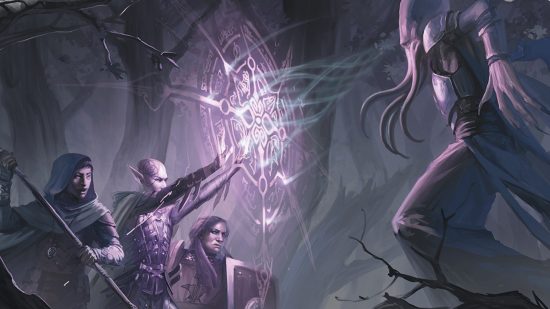
Spellcasting
Spellcasting ability
Charisma is your spellcasting ability for your Bard spells. Your magic comes from the heart and soul you pour into the performance of your music or oration. You use your Charisma whenever a spell refers to your spellcasting ability. In addition, you use your Charisma modifier when setting the saving throw DC for a Bard spell you cast and when making an attack roll with one.
Your spell save DC is: 8 + your proficiency bonus + your Charisma modifier
Your spell attack modifier is: your proficiency bonus + your Charisma modifier
Ritual casting
You can cast any Bard spell you know as a ritual if that spell has the ritual tag.
Spellcasting focus
You can use a musical instrument (see the ‘Equipment’ section above) as a spellcasting focus for your Bard spells.
At first level
You know two cantrips of your choice from the Bard spell list, and you know four first-level spells of your choice from the Bard spell list.
At higher levels
You learn additional Bard cantrips of your choice at higher levels, shown in the Cantrips Known column of the Bard table.
The Bard table below shows how many spell slots you have to cast your spells of first level and higher. The Spells Known column of the Bard table shows when you learn more Bard spells of your choice. Each of these spells must be of a level for which you have spell slots, as shown on the table. For instance, when you reach third level in this class, you can learn one new spell of first or second level.
Additionally, when you gain a level in this class, you can choose one of the Bard spells you know and replace it with another spell from the Bard spell list, which also must be of a level for which you have spell slots.
Spells known table
| Spell slots | |||||||||||
| Level | Cantrips | Spells known | 1 | 2 | 3 | 4 | 5 | 6 | 7 | 8 | 9 |
| 1 | 2 | 4 | 2 | – | – | – | – | – | – | – | – |
| 2 | 2 | 5 | 3 | – | – | – | – | – | – | – | – |
| 3 | 2 | 6 | 4 | 2 | – | – | – | – | – | – | – |
| 4 | 3 | 7 | 4 | 3 | – | – | – | – | – | – | – |
| 5 | 3 | 8 | 4 | 3 | 2 | – | – | – | – | – | – |
| 6 | 3 | 9 | 4 | 3 | 3 | – | – | – | – | – | – |
| 7 | 3 | 10 | 4 | 3 | 3 | 1 | – | – | – | – | – |
| 8 | 3 | 11 | 4 | 3 | 3 | 2 | – | – | – | – | – |
| 9 | 3 | 12 | 4 | 3 | 3 | 3 | 1 | – | – | – | – |
| 10 | 4 | 14 | 4 | 3 | 3 | 3 | 2 | – | – | – | – |
| 11 | 4 | 15 | 4 | 3 | 3 | 3 | 2 | 1 | – | – | – |
| 12 | 4 | 15 | 4 | 3 | 3 | 3 | 2 | 1 | – | – | – |
| 13 | 4 | 16 | 4 | 3 | 3 | 3 | 2 | 1 | 1 | – | – |
| 14 | 4 | 18 | 4 | 3 | 3 | 3 | 2 | 1 | 1 | – | – |
| 15 | 4 | 19 | 4 | 3 | 3 | 3 | 2 | 1 | 1 | 1 | – |
| 16 | 4 | 19 | 4 | 3 | 3 | 3 | 2 | 1 | 1 | 1 | – |
| 17 | 4 | 20 | 4 | 3 | 3 | 3 | 2 | 1 | 1 | 1 | 1 |
| 18 | 4 | 22 | 4 | 3 | 3 | 3 | 2 | 1 | 1 | 1 | 1 |
| 19 | 4 | 22 | 4 | 3 | 3 | 3 | 2 | 1 | 1 | 1 | 1 |
| 20 | 4 | 22 | 4 | 3 | 3 | 3 | 2 | 1 | 1 | 1 | 1 |

Bardic Inspiration 5e
You can inspire others through stirring words or music. To do so, you use a bonus action on your turn to choose one creature other than yourself within 60 feet of you who can hear you. That creature gains one Bardic Inspiration die, a d6.
Once within the next ten minutes, the creature can roll the die and add the number rolled to one ability check, attack roll, or saving throw it makes. The creature can wait until after it rolls the d20 before deciding to use the Bardic Inspiration die, but must decide before the GM says whether the roll succeeds or fails. Once the Bardic Inspiration die is rolled, it is lost. A creature can have only one Bardic Inspiration die at a time.
You can use this feature a number of times equal to your Charisma modifier (a minimum of once). You regain any expended uses when you finish a DnD long rest.
Your Bardic Inspiration die changes when you reach certain levels in this class. The die becomes a d8 at fifth level, a d10 at tenth level, and a d12 at 15th level.
Jack of All Trades 5e
Starting at second level, you can add half your proficiency bonus, rounded down, to any ability check you make that doesn’t already include your proficiency bonus.
Song of Rest 5e
Beginning at second level, you can use soothing music or oration to help revitalize your wounded allies during a short rest. If you or any friendly creatures who can hear your performance regain hit points at the end of the short rest by spending one or more Hit Dice, each of those creatures regains an extra 1d6 hit points.
The extra hit points increase when you reach certain levels in this class: to 1d8 at ninth level, to 1d10 at 13th level, and to 1d12 at 17th level.
Expertise
At third level, choose two of your skill proficiencies. Your proficiency bonus is doubled for any ability check you make that uses either of the chosen proficiencies. At tenth level, you can choose another two skill proficiencies to gain this benefit.

Ability Score Improvement
When you reach fourth level, and again at 8th, 12th, 16th, and 19th level, you can increase one ability score of your choice by two, or you can increase two ability scores of your choice by one. As normal, you can’t increase an ability score above 20 using this feature.
Font of Inspiration 5e
Beginning when you reach fifth level, you regain all of your expended uses of Bardic Inspiration when you finish a short or long rest.
Countercharm 5e
At sixth level, you gain the ability to use musical notes or words of power to disrupt mind-influencing effects. As an action, you can start a performance that lasts until the end of your next turn. During that time, you and any friendly creatures within 30 feet of you have advantage on saving throws against being frightened or charmed. A creature must be able to hear you to gain this benefit.
The performance ends early if you are incapacitated or silenced or if you voluntarily end it (no action required).
Magical Secrets 5e
By 10th level, you have plundered magical knowledge from a wide spectrum of disciplines. Choose two spells from any class, including this one. A spell you choose must be of a level you can cast, as shown on the Bard table, or a cantrip.
The chosen spells count as Bard spells for you and are included in the number in the Spells Known column of the Bard table. You learn two additional spells from any class at 14th level and again at 18th level.
Superior Inspiration
At 20th level, when you roll Initiative and have no uses of Bardic Inspiration left, you regain one use.
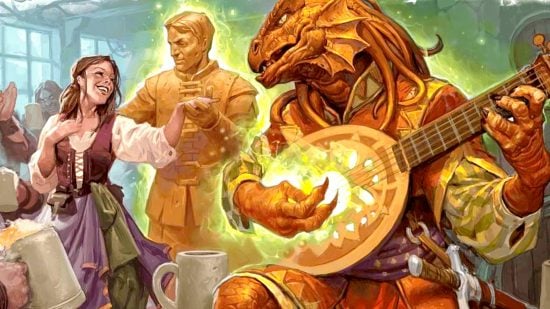
Bard Colleges 5e
Starting at third level, you unlock Bard subclasses, meaning your Bard is able to join one of the Bard Colleges 5e. These Colleges are associations of Bards who value different paths in life, magic, and performance.
Here you’ll find a complete explanation of how each College works. However, if you need help deciding which to play, be sure to check out our ranked DnD Bard subclasses guide.
College of Creation
Found in: Tasha’s Cauldron of Everything
| Level | Subclass ability |
| 3 | Mode of Potential, Performance of Creation |
| 6 | Animating Performance |
| 14 | Creative Crescendo |
Believing that the act of creating art is the purest form of magic, most Bards who join the College of Creation connect deeply with their art, and their world’s creation myths.
Mote of Potential lets you create a Tiny mote of potential any time you give a creature a Bardic Inspiration die. It lasts until the die is spent, at which point the mote produces a unique effect. This depends on what the Bardic Inspiration die was used for:
- Ability check – Roll the Bardic Inspiration die again and choose your preferred result.
- Attack roll – Force each creature of your choice within five feet of an attack enhanced by Bardic inspiration to make a Con saving throw or take thunder damage equal to the Bardic Inspiration die’s result.
- Saving throw – The creature that used the Bardic Inspiration die gains temporary hit points equal to the die’s result plus your Charisma modifier.
Performance of Creation is an action that creates one non-magical item of your choice in an unoccupied solid surface within ten feet. Its value is up to 20 times your Bard level, and it can only be in the Medium or Small DnD sizes categories. When you reach sixth and 14th level, the item can become Large, and then Huge.
The item vanishes after a number of hours equal to your proficiency bonus or when you create another item in this way. You can only perform this action once per long rest – unless you spend a second-level or higher spell slot to do it again.
Another action you’ll learn is Animating Performance, which turns a Large or smaller non-magic item within 30 feet into an animated creature. It uses the Dancing Item stat block and lives for one hour (unless it has no hit points left or you die first).
The item acts on your Initiative during combat, and you can spend a bonus action to order it around. If you use your bonus action on Bardic Inspiration, you can command this item as part of the same action. Otherwise, it’ll automatically take the Dodge action (unless you become incapacitated, at which point it’s free to take other actions). The item remains animated until your next long rest or if you use the feature again.
Creative Crescendo enhances Performance of Creation, allowing you to create a number of items equal to your Charisma modifier. If you create more items than this max number, you can choose which old item disappears. Plus, you’re no longer limited by how much an item is worth when choosing what to create.
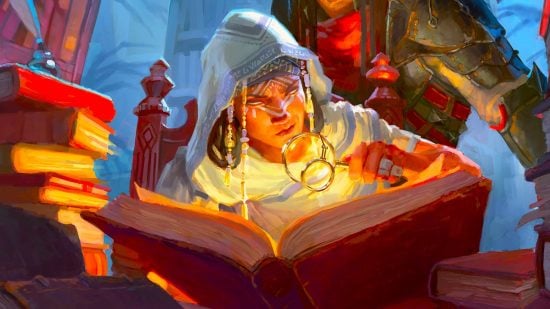
College of Eloquence
Found in: Tasha’s Cauldron of Everything
| Level | Subclass ability |
| 3 | Silver Tongue, Unsettling Words |
| 6 | Unfailing Inspiration, Universal Speech |
| 14 | Infectious Inspiration |
College of Eloquence is the perfect subclass for those who love to talk their way out of any situation they find themselves in. Masters of communication and storytelling, these Bards value the art of speaking above all else, and get quite good at it.
Silver Tongue lets you treat a Persuasion or Deception roll of nine or lower as a ten. Meanwhile, Unsettling Words is a bonus action that lets you use one Bardic Inspiration die to target a creature within 60 feet. Roll that die, and subtract the number from that creature’s next saving throw before the start of your next turn.
Unfailing Inspiration lets a creature keep the Bardic Inspiration die if the roll they added it to fails. Universal Speech is an action that targets one or more creatures within 60 feet (max equals your Charisma modifier). Whatever DnD languages the targets can speak, they can understand you for one hour.
If a creature succeeds on a roll that added one of your Bardic Inspiration dice, you can use Infectious Inspiration as a reaction to give a Bardic Inspiration die to a different ally within 60 feet who can see or hear you. This doesn’t use up one of your Bardic Inspiration die, and you can perform the act a number of times equal to your Charisma modifier before you need a long rest.
College of Lore
Found in: Player’s Handbook
| Level | Subclass ability |
| 3 | Cutting Words, Bonus Proficiencies |
| 6 | Additional Magic Secrets |
| 14 | Peerless Skill |
College of Lore is perfect for Bards who want to know a little bit of everything. These Bards think of knowledge as an art form, and often gather in libraries and actual schools to swap information, and teach each other new skills. If you fancy playing a Bard who aspires to be more than just a pretty face, this might be the subclass for you.
Bonus proficiencies automatically gives you three extra skill proficiencies of your choice. Cutting words is a reaction that triggers when a creature within 60 feet that you can see makes an attack roll, ability check, or damage roll. Roll a Bardic Inspiration die and subtract the number from that creature’s roll.
Additional Magical Secrets is the same as your regular Magical Secrets feature, but you gain access to it at level six as well as level ten. Peerless Skill lets you spend a Bardic Inspiration use when you make an ability check. Roll a Bardic Inspiration die, and you can add that roll to your ability check.
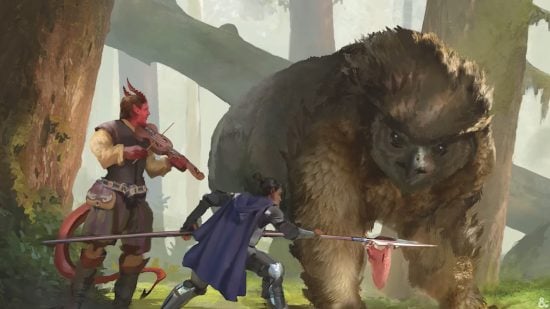
College of Valor
Found in: Player’s Handbook
| Level | Subclass ability |
| 3 | Bonus Proficiencies, Combat Inspiration |
| 6 | Extra Attack |
| 14 | Battle Magic |
The College of Valor subclass is perfect for Bards who are interested as much in combat as they are with typical bardic musings. These Bards venerate the heroes of old, and use those ancient stories to inspire a new generation of heroes. Bards who choose this path are very reminiscent of the classic Bards of the fantasy genre, musical folk ‘historians’ who exist to sing the praises of those who have done Great Deeds.
This subclass gives you Bonus Proficiencies with medium armor, DnD shields, and martial weapons. Combat Inspiration means that a creature can add one of your Bardic Inspiration dice to a weapon damage roll it just mage. Instead, it could also use a reaction to roll the Bardic Inspiration die and add the number to its armor class for that attack.
Extra Attack lets you attack twice in a turn, and Battle Magic lets you make a weapon attack as a bonus action if you spent your action casting a Bard spell.
College of Glamour
Found in: Xanathar’s Guide to Everything
| Level | Subclass ability |
| 3 | Mantle of Inspiration, Enthralling Performance |
| 6 | Mantle of Majesty |
| 14 | Unbreakable Majesty |
If you’re fascinated by fairy tales, College of Glamour is the perfect Bard subclass for you. Because the Glamour Bards draw their inspiration from fey, and the Feywild, they have an air of whimsy and mystery, and a touch of apprehension to them. These Bards value both the silly and terrifying aspects of fey, making them a delightfully flexible class to play.
Mantle of Inspiration is a bonus action that spends one of your Bardic Inspiration die. In exchange, you can choose a number of creatures equal to your Charisma modifier that are within 60 feet (and can see or hear you). They each gain five temporary hit points, and they can immediately spend a reaction to move up to its speed without triggering opportunity attacks. As you level up, the number of hit points you provide increases.
Enthralling Performance triggers when you perform for at least one minute. Choose a number of humanoids within 60 feet who watched (max equals your Charisma modifier). They must all pass a Wisdom save or become charmed for an hour (or until the target takes damage, is attacked by you, or sees you attack its allies).
Mantle of Majesty lets you cast Command as a bonus action without using a spell slot. You also become extra beautiful for one minute, with the ability to cast Command as a bonus action on each of your turns. Charmed creatures automatically fail the save.
Unbreakable majesty can be triggered as a bonus action, and it lasts for one minute. Any time a creature attacks you for the first time on a turn, it must pass a Charisma save or choose a new target for the attack. If there is no alternative target, the attack is wasted. If the target passes the saving throw, it has disadvantage on saving throws against your spells on your next turn.
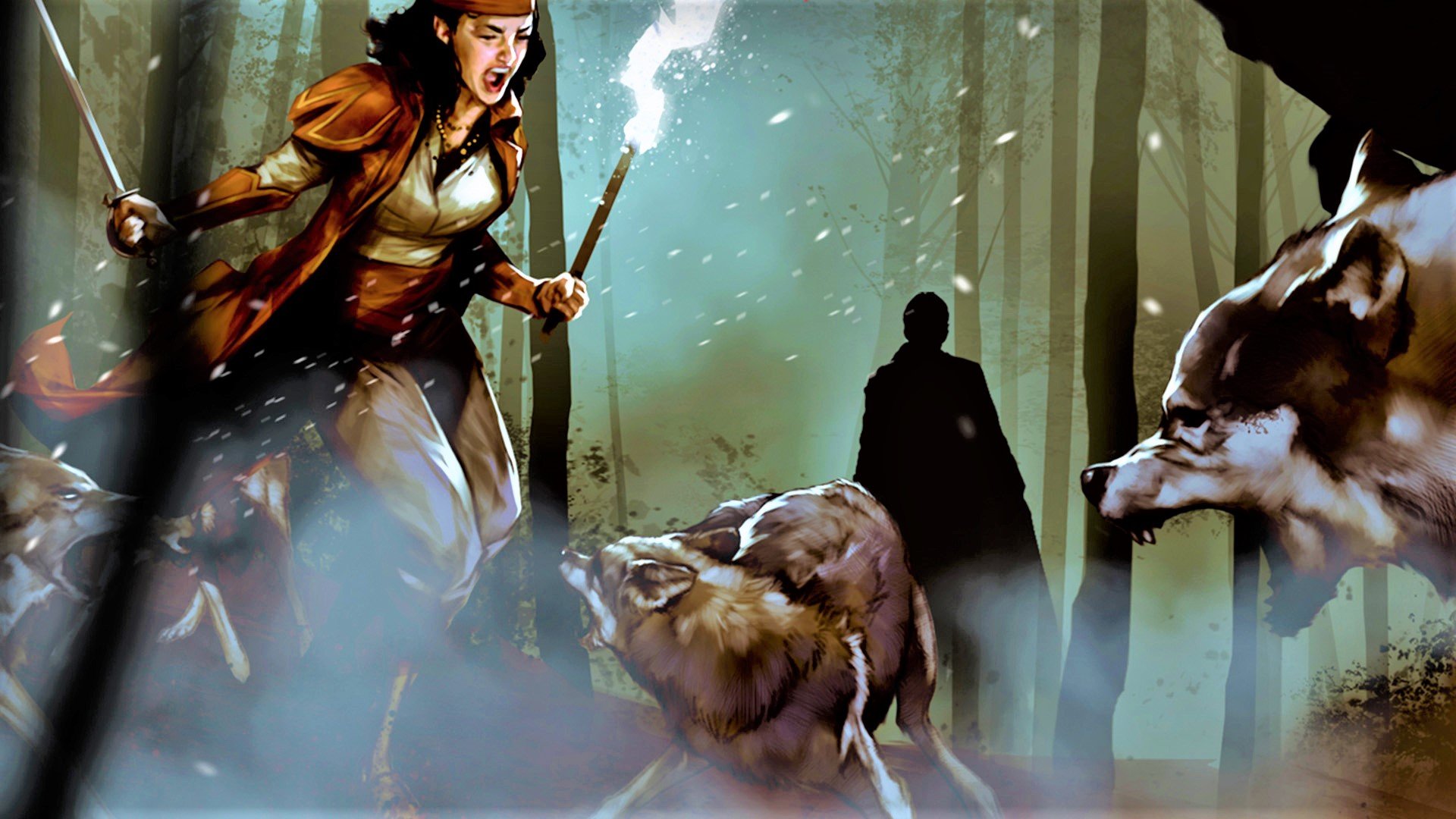
College of Swords
Found in: Xanathar’s Guide to Everything
| Level | Subclass ability |
| 3 | Bonus Proficiencies, Fighting style, Blade Flourish |
| 6 | Extra Attack |
| 14 | Master’s Flourish |
College of Swords is the perfect subclass for those who want to be both the face and the fist of the party. Because this College values strength and fighting, it’s one of the most versatile Bard subclasses. If you have ever entertained the idea of being a stunt performer, College of Swords might suit you perfectly.
Choosing this College gives you proficiency with medium armor and the scimitar. If you’re proficient with simple or martial melee weapons, you can use one of these as a spellcasting focus. Like the DnD Fighter, you’ll also get to choose one of the following Fighting Styles:
- Dueling – +2 bonus to damage rolls when wielding a melee weapon in one hand, and no other weapons
- Two-Weapon Fighting – Add your ability modifier to the damage of your second attack when using two DnD weapons
Whenever you attack on your turn, Blade Flourish increases your walking speed by ten feet until the end of your turn. If your attack hits, you can also use one of the following options:
- Defensive Flourish – Spend Bardic Inspiration to deal extra damage equal to your Bardic Inspiration die roll.
- Slashing Flourish – Spend a Bardic Inspiration die to deal extra damage equal to its roll, targeting your original target and any other creature of your choice within five feet of you.
- Mobile Flourish – Spend a Bardic Inspiration die to deal extra damage equal to the roll and push the target up to five feet away (plus the number from your die roll). You can then use a reaction to move up to your walking speed to another space within five feet of the target.
Extra attack allows you to attack twice on your turn. Finally, Master’s Flourish lets you roll a d6 instead of your Bardic Inspiration die when using a Blade Flourish option.

College of Whispers
Found in: Xanathar’s Guide to Everything
| Level | Subclass ability |
| 3 | Psychic Blades, Words of Terror |
| 6 | Mantle of Whispers |
| 14 | Shadow Lore |
The College of Whispers is all about manipulation. It doesn’t make them many friends, but it can make them very powerful allies.
Psychic Blades lets you spend a Bardic Inspiration die to add 2d6 extra psychic damage to a successful weapon attack. This can only be done once per round and on your turn.
Words of Terror forces a target to make a Wisdom saving throw or become frightened of you and another creature of your choice. This last for an hour or until the target is attacked or damaged, or sees you attacking or damaging an ally.
Mantle of Whispers lets you capture a humanoid creature’s shadow when it dies. This uses your reaction, and you now look like a living version of that person. The disguise lasts for an hour or until you end it using a bonus action. Becoming this person gives you access to information they’d have shared in public, but others can still figure out your disguise by passing an Insight check (roll it against your Charisma plus five).
Shadow Lore is an action that forces a creature to make a Wisdom saving throw or become charmed for eight hours. The charmed creature obeys your commands, and stays under your thrall unless attacked, damaged, or forced to make a saving throw.
College of Spirits
Found in: Van Richten’s Guide to Ravenloft
| Level | Subclass ability |
| 3 | Guiding Whispers, Spiritual Focus, Tales from Beyond |
| 6 | Spirit Session |
| 14 | Mystical Connection |
College of Spirits Bards value stories and history above all, and they use magic to bring myth and legends to life.
Guiding Whispers lets you cast the Guidance cantrip with a range of 60 feet. Spiritual Focus lets you use a candle, crystal ball, skull, spirit board, or tarokka deck as your spellcasting focus. When you reach level six and you cast a damage or healing spell with this focus, you can roll a d6 and add the result to your damage or healing roll.
Tales from Beyond lets you spend a bonus action and a Bardic Inspiration die to reach out to spirits. Your die roll determines which of 12 possible effects will occur. This effect takes place when you use an action and choose a creature you can see within 30 feet to be its target.
Spirit Session is an hour-long ritual that involves a number of willing creatures equal to your proficiency bonus (including you). When the ritual is complete, you learn one Divination or Necromancy spell until the start of your next long rest. This spell’s level is equal to the number of creatures involved in the ritual (or less).
Mystical Connection lets you roll twice when using your Tales from Beyond feature. You can choose which result you want to resolve. If you roll the same number on both dice, you can choose any effect.
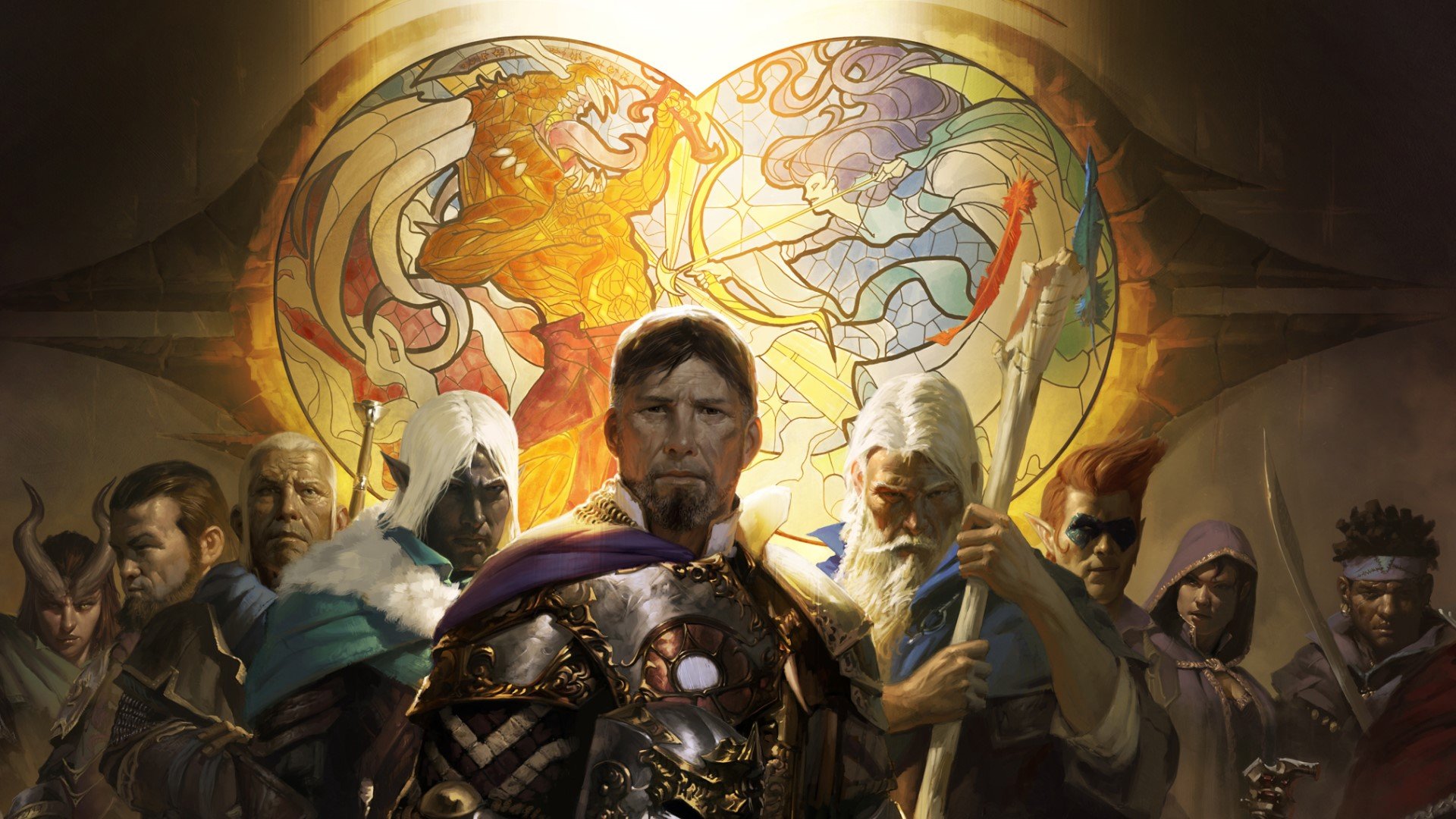
Best Bard 5e stats
From most important to least, these are the DnD stats a Bard should prioritize:
- Charisma – While bards are natural spellcasters, all their magic comes from their charm and performance skills, so, when rolling your Bard 5e stats, you’re going to want to prioritize Charisma (Cha) over everything else.
- Dexterity – The bard is proficient in several ranged and light melee weapons, which use Dexterity for their attack bonus.
- Constitution – Constitution provides a buff to the Bard’s ability to maintain concentration on a spell after they’ve been hit.
- Wisdom – Buffs your Perception stat, and helps protect you against the most common saving throws a DnD monster might throw your way.
- Intelligence – It can be useful to roll high on knowledge-based skills, but it’s not as essential as everything else on this list.
- Strength – Bards are basically never the muscle of the group. Leave the Barbarian 5e and Fighter 5e characters in the party to lift all the heavy things – as a Bard, you ain’t about that life.
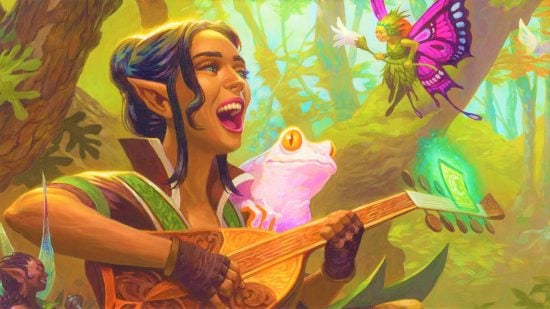
Best Bard 5e races
Because Bards rely so heavily on their Charisma, the best races for Bards are ones that strongly increase that stat.
Depending on your playstyle, you may instead want to pick a race that will shore up your low Strength, or else add more to your Dexterity or Constitution, for better survivability – but nine times out of ten, any choice that buffs Cha is going to be your best bet.
Half-elf
The Half-elf 5e race is arguably the perfect choice for a Bard, because, right away, you get a +2 to your Charisma, and each subclass grants an additional +1 you can add wherever you choose (but should probably go to your Dex or Con). Half-elf characters also get an additional skill, and Darkvision – adding even more versatility to your dynamic Bard.
Not only that, but you also get resistance to being charmed. There are many subraces to choose from, but, for choice, we’d recommend choosing either the High Half-Elf or the Standard Half-Elf for your bard build.
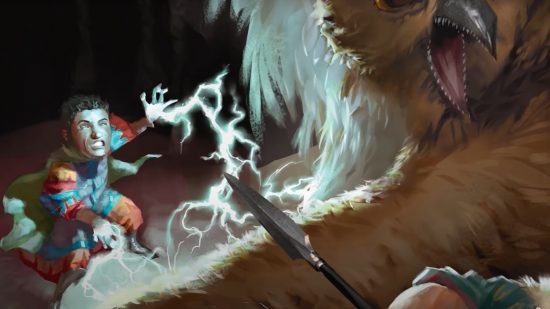
Halfling
The Halfling 5e race is another great option for Bard. They can add a +2 to Dexterity, and then a +1 to Charisma or Constitution, depending on the subrace. That +1 Charisma is the obvious way to go as a Bard, and for that you’ll want the Lightfoot subrace.
Halflings also get feats called Brave and Lucky, which add beautifully to the support of your friends and allies. Your small size also gives you naturally better stealth, and the ability to move through the space of creatures larger than you (that’s most creatures).
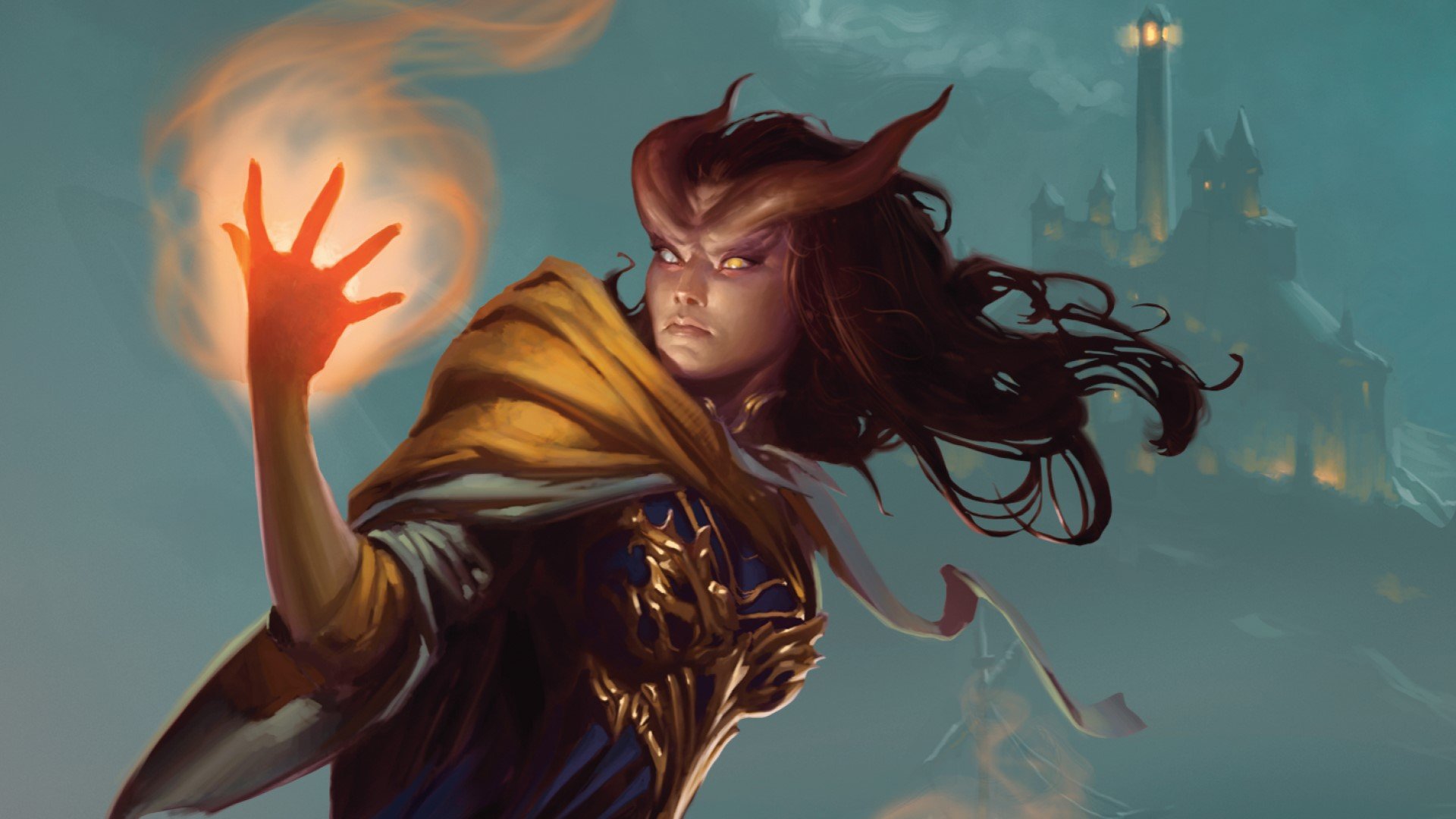
Tiefling
DnD’s Tiefling 5e race provides a much-appreciated +2 boost to Charisma, and also gives you a +1 to intelligence – which is not exactly a priority, but is nice to have nonetheless. Tieflings also get Darkvision, resistance to fire damage, and the Thaumaturgy cantrip, independent of your bardic spells, which, at the very least, means “yay, more magic!”
There’s almost no wrong option when it comes to choosing a subrace. We highly recommend Dispater, Variant: winged (you can fly), or Variant: Devil’s tongue (you get extra spells) – but feel free to shop around, and see what fits best for you!

Best Bard 5e spells
While most Bard spells are pretty effective, we’ve provided lists of the best Bard spells and worst Bard spells for beginners below. This section of the guide covers all your options from the official Bard spell list. If you’re wondering what spells to choose with your DnD Magical Secrets feature, our dedicated guide can recommend some picks from other class spell lists.
When choosing spells, it’s important to make note of their specific component requirements, and if they take concentration – as both these things can dictate whether you’re able to cast those spells at certain times.
Best Bard 5e spells for beginners
Minor Illusion
Level: Cantrip
This spell is able to create a small sound, smell, or spectre that lasts for a short time. This is great because it can be whatever you make of it – whether a cunning distraction, or an aid to your performance.
Vicious Mockery
Level: Cantrip
While the spell itself does only a small amount of damage, it can be so fun to use, and is an undeniably iconic Bard spell.
Healing Word
Level: One
Because Bards have low health and armour class, most Bards stay away from action to minimize getting hurt. Healing Word allows you to heal an injured companion from far away, meaning you can help without directly entering the fray.
Dissonant Whispers
Level: One
This is the perfect spell for dishing out small amounts of supplementary damage, and/or simply distracting an opponent, to give the edge to your allies. This spell can be very effective for getting attention, and doesn’t require any spell components/focus.
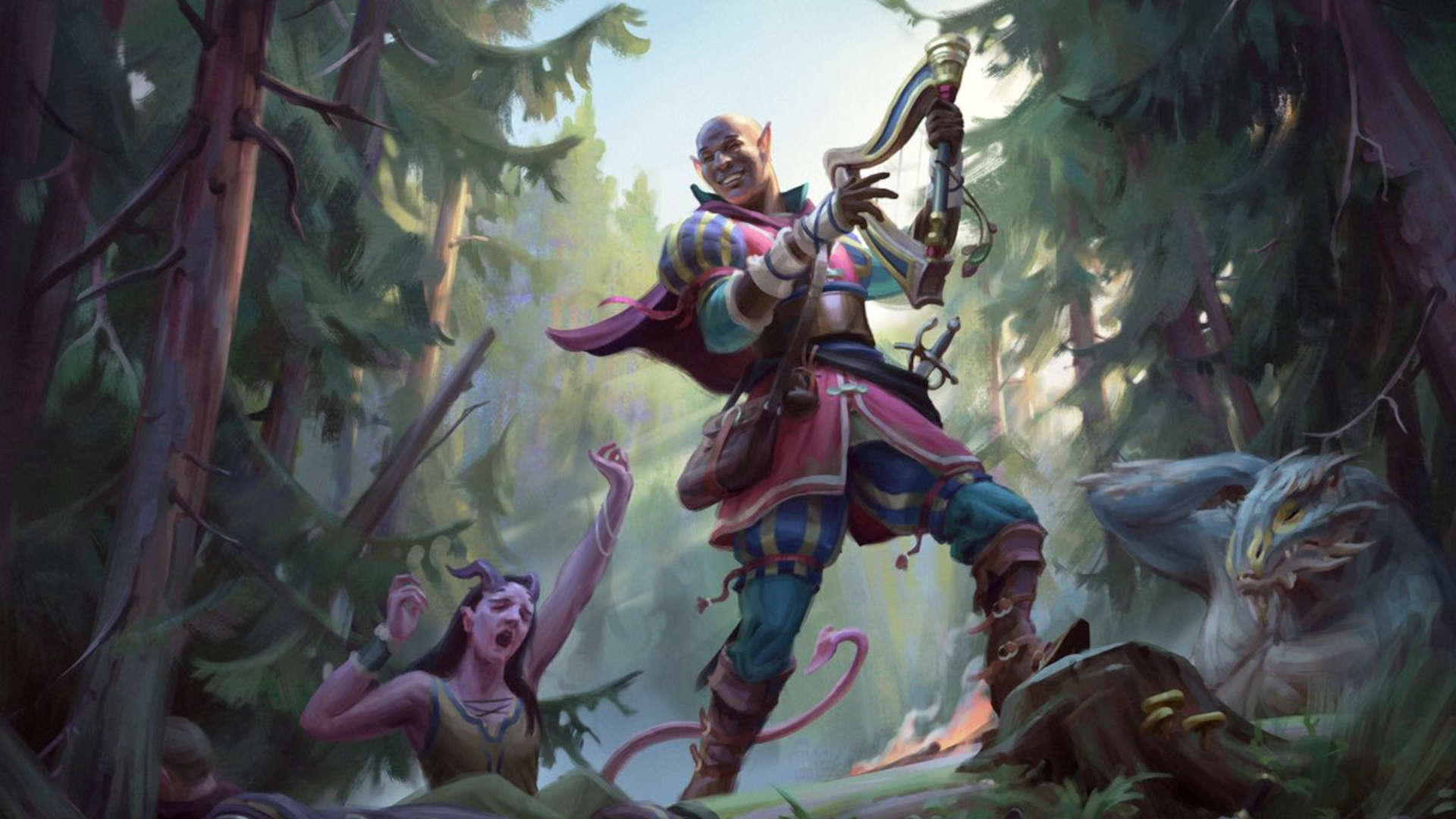
Sleep
Level: One
A fantastic spell for dealing with weak enemies that are compensating by using environmental advantages. When a group of Kobolds or Goblins get the drop on you and are enjoying substantial cover advantages, Sleep’s the perfect answer.
Enhance Ability
Level: Two
The spell does exactly what it sounds like it does, temporarily boosting an ability score for a given character. It can help your party become stronger, smarter, or whatever it is they might need to do! It’s versatile and you can use it often.
Suggestion
Level: Two
Suggestion allows you to suggest a task to any creature that understands you. Providing the creature fails their Wisdom saving throw, that creature has to carry out your suggestion to the best of their ability. Great for convincing an enemy to go home and take a nap during combat, or getting a guard to let your imprisoned friend loose, this spell has theoretically infinite fun-filled uses.
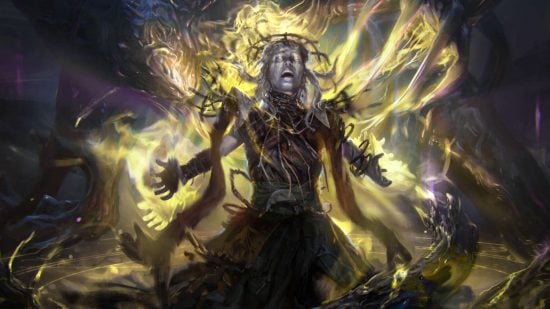
Bestow Curse
Level: Three
By simply touching a creature briefly, you can give it disadvantage on certain checks and saves, or make it unable to take a turn. While it doesn’t do any damage, it’s the perfect spell for aiding your companions in combat, by magically giving them the upper hand in a fight.
Enemies Abound
Level: Three
Another great combat spell that helps both your Bard, and your party, this one causes an enemy to lose the ability to distinguish friend from foe. Since most monster enemies have a low Int score, they’re extra-susceptible to this spell, allowing you to stop oncoming enemies in their tracks, and watch them turn on each other.
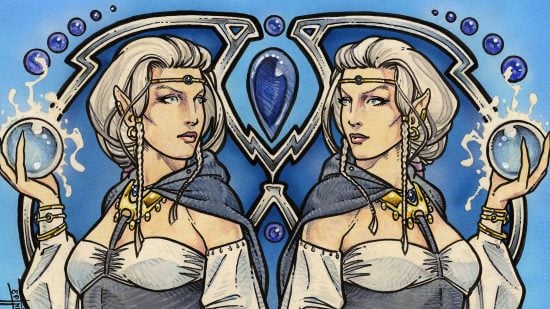
Polymorph
Level: Four
While this is a more complicated spell to deploy effectively, it’s one that’s endlessly versatile. Becoming someone else for a while has its advantages, that’s for sure.
Dimension Door
Level: Four
Being able to teleport? Yes, please! This gives you a way to teleport yourself and one other person away from the fight, or behind a locked door. Incredibly useful, and – crucially – can also be used for shenanigans.
Greater Restoration
Level: Five
If you are the party healer, you need this spell. Actually, even if your party has a healer, you need this spell. It provides so much safety and security to your companions, and can often be what saves a party member from dying. Great to have in your arsenal.
Hold Monster
Level: Five
Working on any creature except undead, this is a superb combat spell that completely paralyzes the target, rendering them useless in a fight.
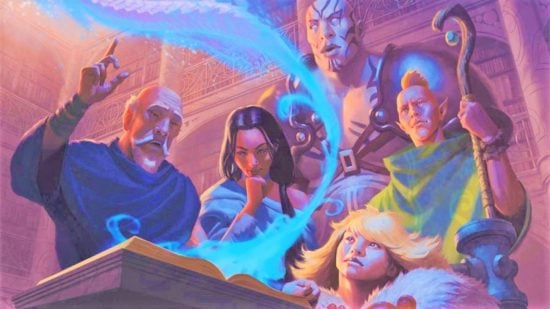
The worst Bard spells for beginners
True Strike
Level: Cantrip
This spell becomes obsolete almost immediately. We highly recommend choosing a spell that aids you in more than one round of combat.
Illusory Script
Level: One
While it may sound cool, it’s a very situational spell that can easily be skipped in favour of alternatives you’ll use regularly.
Crown of Madness
Level: Two
This spell is a cool concept, but should be overlooked in favor of other options, simply because you have to use your action every turn to maintain its effects, stopping you from doing anything else to help the party.
Feign Death
Level: Three
Again, super cool concept! However, when you have access to so few spells at any one time, this one probably won’t be used enough to justify taking it from the start.
Locate Creature
Level: Four
Cool if you’re looking for a creature you know is close by, but given that it has a range of only 1,000 feet, if a creature is on the run, this spell swiftly becomes effectively useless.
Legend Lore
Level: Five
This one sounds technically uber-powerful – allowing you to magically summon up a basic knowledge on literally any topic – but it likely won’t come in useful often enough to justify it taking up precious space in your spell arsenal.

Best Bard 5e builds
Now that you’ve got a sense for the Bard, and all the different ways you can play one, here are some premade Bard builds 5e that you can use, or draw inspiration from when creating your own character. We’ll explore a range of possible subclasses with each build, offering suggestions at crucial decision-making points. Also, you can calculate your base stats any way you like, but we’ve used the Standard Array for simplicity.
Aasimar College of Lore Bard
The College of Lore Bard is a solid all-rounder, proficient in a wide range of skills and able to access all spell lists at a far earlier level than other Bards.
Starting stats
| Strength | 8 |
| Dexterity | 14 |
| Constitution | 13 |
| Intelligence | 10 |
| Wisdom | 12 |
| Charisma | 15 |
Race
Aasimar come with custom ability scores, so you can add your +2 to Charisma and your +1 to Dexterity. By choosing this race, you’ll gain a bunch of general utility features, such as a free Light cantrip, Darkivison, and resistance to necrotic damage and radiant damage. Plus, once per long rest, you can spend an action healing an ally without the need to use spell slots.
The real reason to play an Aasimar is their Celestial Revelation ability. This lets you choose one of three possible conditions to unleash as a bonus action. We always choose ‘Radiant Soul’, as it gives you a flying speed equal to your walking speed. You’re much harder to hit when you’re in the air, meaning you can keep out of danger – and in range for your Cutting Words ability.
Spells
Your early DnD cantrips and spells should do a small amount of damage or create illusions. We find that, with Lore Bards, it’s best to have a pretty even mix of combat magic and spells that can be used to trick people, or find out information.
College of Lore Bards are all about being whatever their party needs in any given situation. So, when picking future spells, choose ones that fit areas the party doesn’t quite have covered yet.
At level six, you gain additional Magical Secrets, giving you access to all spell lists. We highly recommend picking up high-damage spells, because they’re something Bards rarely have access to. Do try to avoid choosing the same spells as other members of your party, though.
At higher levels, the Bard’s flexibility really comes out to play. You can be a backup healer, a smooth talker, a stealthy thief, and even a second string fighter, all at once. Keep having fun, and don’t worry if you choose a spell that turns out to not be useful – remember, you can switch one out every level up.

Halfling College of Swords Bard
Swords Bards spend a lot more time in melee range, so they need to be made of tough stuff. Here’s a build that’ll keep you alive in combat:
Starting stats
| Strength | 8 |
| Dexterity | 13 |
| Constitution | 14 |
| Intelligence | 10 |
| Wisdom | 12 |
| Charisma | 15 |
Race
Halflings are one of the most common races for bards in D&D, and with good reason – right off the bat you get a +2 to Dexterity, which is going to be needed for a more combat-based Bard. For this build, we’ll choose the Lightfoot subrace to get the +1 Charisma boost too.
You also gain the racial trait Lucky which allows you to reroll a single natural one, once per long rest. A handy backup for an attack-based Bard. You also gain advantage on any save against being frightened.
Fighting style
Dueling works well because it frees up one of your hands for spellcasting.
Spells
Start off by picking up a mix of healing and defensive spells – because later on you’ll be choosing more combat-based magic. From here on out, choose offensive spells that have a shorter range, as you will often be engaged directly in combat. We also recommend picking up defensive spells as the priority over damage-dealing spells.
At sixth level, you are granted an extra attack. Perfect for combat, and works best if you have spells like Dimension Door, or features that allow you to disengage, so that you can enter the fray and get out again freely without suffering DnD opportunity attacks.
Past sixth level, your Bard takes on more of a fighter role than a traditional Bard role, so when picking features and spells, it’s important to choose the ones that will most help you in combat.
Eladrin College of Glamour Bard
By picking up College of Glamour, your Bard will favour illusions, and trickery over open combat or hostility.
Starting stats
| Strength | 8 |
| Dexterity | 14 |
| Constitution | 13 |
| Intelligence | 10 |
| Wisdom | 12 |
| Charisma | 15 |
Race
The Eladrin have ties to the Feywild, so they fit the theme of this Bard subclass. Plus, you can assign your ability score increases however you like – we recommend adding a +2 to Charisma and a +1 to Dexterity.
Eladrin have Darkvision and advantage on saving throws to end the charmed condition on yourself. Their main advantage is the Fey Step feature that allows them to teleport as a bonus action. Most of the Glamour Bard’s abilities focus on buffing friends and manipulating enemies, so it helps to be able to move freely across the battlefield.
Spells
For spells, we suggest favoring defensive and support choices, as most College of Glamour features supplement their effects. As a Glamour Bard, you are gifted with extra abilities to aid your allies in combat. We recommend picking up spells that aid in social situations, for example those with Charm effects.
At higher levels, the Glamour Bard is all about bending people to their will to better serve their parties and themselves. You can either lean into this aspect, or focus on taking spells and feats that are in other areas of spellwork, to be as multifaceted as possible. It’s the freedom to go kind of all over the place with your spells that makes the Glamour Bard fun.

Bardic disclaimer: Yes, we do know that first image is actually Yisan, The Wanderer Bard from Magic: The Gathering. If Wizards of the Coast is allowed to mix D&D and Magic, then so are we.
This guide directly presents rules text for the DnD 5e Bard class, published by Wizards of the Coast under a Creative Commons Attribution 4.0 license.
Got a Bard build in mind? Here’s how to write it all down on a DnD character sheet. We can also help you fill in the few remaining details, like your DnD backgrounds and DnD feats.
